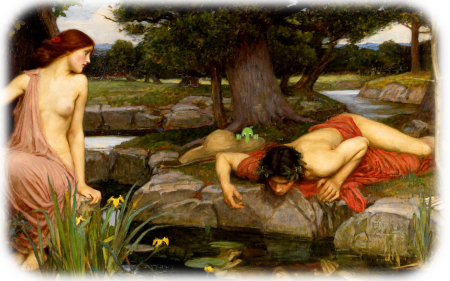Membranosorus

The following paper incorrectly reported Membranosorus heterantherae as Sorodiscus heterantherae, which has misled some reviewers to doubt the validity of the genus Membranosorus. Membranosorus is a valid genus; the Wernham paper was wrong. Wernham, C. C. 1935. A species of Sorodiscus on Heteranthera. Mycologia 27: 262-273.
Personal Comments
Because there were questions in the literature as to whether or not Membranosorus was a valid genus, I wanted to look for myself at the sporosori of the plasmodiophorid on water-stargrass and to compare the synaptonemal complexes and chromosomal numbers with other plasmodiophorids. I planned a camping-trip holiday in August 1981 to the finger-lake region in upstate NY where infected specimens of water-stargrass had been reported. Through the assistance of Gary Miller, then at Eisenhower College in Seneca, NY, and Frank Widmer of the Eisenhower College marina, we took a row boat to several sites on the north end of Cayuga Lake where water-stargrass was known to grow. I put on a swimming mask and flippers, jumped into about 5 feet of water, and took a look around. The first batch of water-stargrass that I pulled up had galls ranging from very young to dark brown.
As with other collecting trips for members the group, I had brought along glutaraldehyde and buffer to fix the material right there. After fixing for several hours, the material was stored in buffer on ice until I returned to Athens, OH, to complete processing the material for transmission electron microscopy.
As I was preparing the manuscripts for publication, I was having difficulty with what to call the host. Several contacts recommended Zosterella dubia (Jacq.) Small. After a few discussions with our departmental systematist, the late Robert M. Lloyd, I decided upon Heteranthera dubia (Jacq.) MacM. Using resources on the Internet such as Plants of the World Online, an international collaborative program at Royal Botanic Gardens Kew that makes available digitized data of the world’s flora, it looks like using Heteranthera was the right thing to do, although I got the abbreviation for the authority wrong.
There is some question as to whether the galls are on stem or root tissue. My freehand sections of the infected tissues looked like roots. It would be a nice, straight-forward project for an undergraduate. Make cross sections to look at the vascular cylinder, and longitudinal sections of the apex. If anybody does this, let me know of the results.
Images of Membranosorus
- Collecting water-stargrass
- Water-stargrass nodal galls
- Sporosori (LMG) and gall
- Host cell with two plasmodia of Membranosorus, LMG
- Young plasmodia of Membranosorus, LMGs
- Transitional plasmodium of Membranosorus, LMG
- Resting spores of Membranosorus, LMG
- Membranosorus synaptonemal complex, TEMG
- Membranosorus synaptonemal complexes, TEMG
- Membranosorus sporosori, SEMG
- Membranosorus sporosorus, TEMG
Selected References for Membranosorus
- Braselton, J. P. 1983. The Plasmodiophoromycete parasitic on Heteranthera dubia. Can. J. Bot. 61: 45-52.
- _____. 1989. Karyotypic analysis of Membranosorus heterantherae (Plasmodiophoromycetes). Can. J. Bot. 67: 1219-1220.
- Forest, H. S., C. N. Horn, & B. A. Marcus. 1986. New observations of galls on Zosterella dubia (Jacq.) Small (Heteranthera dubia (Jacq.) MacM.) infected by Membranosorus heterantherae Ostenfeld and Peterson [sic]. Env. & Exp. Bot. 26: 377-384.
- Ostenfeld, C. H. and H. E. Petersen. 1930. On a new Plasmodiophoracea found in Canada. Z. Bot. 23: 13-18.